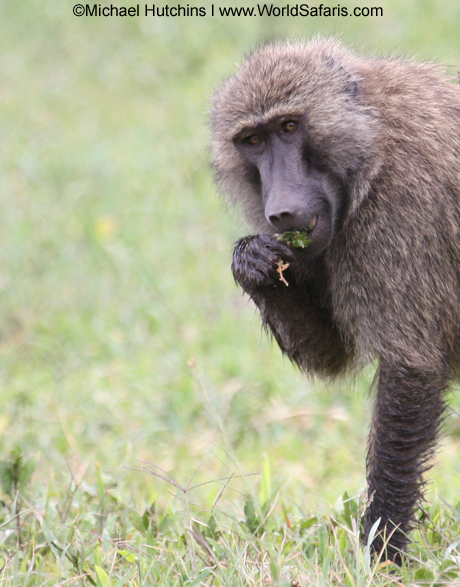
I’m not really sure how many species of non-human primates I’ve seen on my world travels, but I still find our closest relatives among the most fascinating of the many wild animals I’ve had an opportunity to observe. On my 2014 trip to the Serengeti and Ngorongoro Crater, our group literally saw hundreds of olive baboons (Papio anubis)–Savannah dwelling monkeys that live in large multi-male, multi-female social groups with young. While these primates spend much of their daytime hours moving and foraging for seeds, roots and insects in the grass, they also interact with each other frequently, engaging in dominance displays, warning each other of danger, caring for their young, and avoiding predators. While primarily herbivorous, they are known to hunt and kill smaller monkeys and antelope on occasion. The large adult males are formidable creatures, with long dagger-like canine teeth. They are much larger than the females (sexual dimorphism), the result of many generations of male-male competition for access to receptive females for mating. A female in estrus (heat), can be identified by her large, swollen red buttocks or ischial callosities (http://en.wikipedia.org/wiki/Callosity). Very young infants ride on the backs of their mothers “jockey style” during long distance movements, but take an opportunity for rough house play when the troop settles down for a rest. Olive baboons often stay in close proximity to impala and the two species respond to one another’s alarm calls when a predator, such as a lion or leopard, may be near. Baboons frequently stand on two legs so that they can see over tall grass. When they do, they look remarkably human. Baboons live much of their lives on the ground, but retreat to the trees at night to keep them safe from predators. Watching these remarkable animals is one of the great joys of a safari to East Africa.


Recent Comments